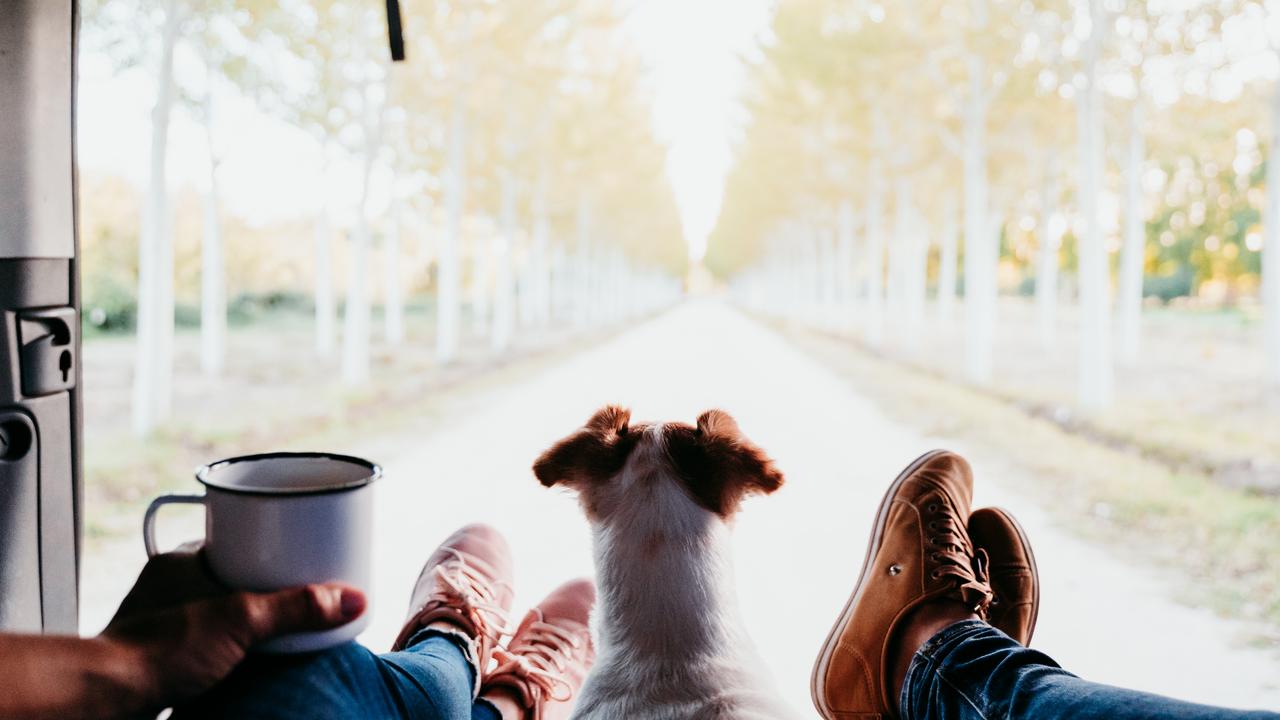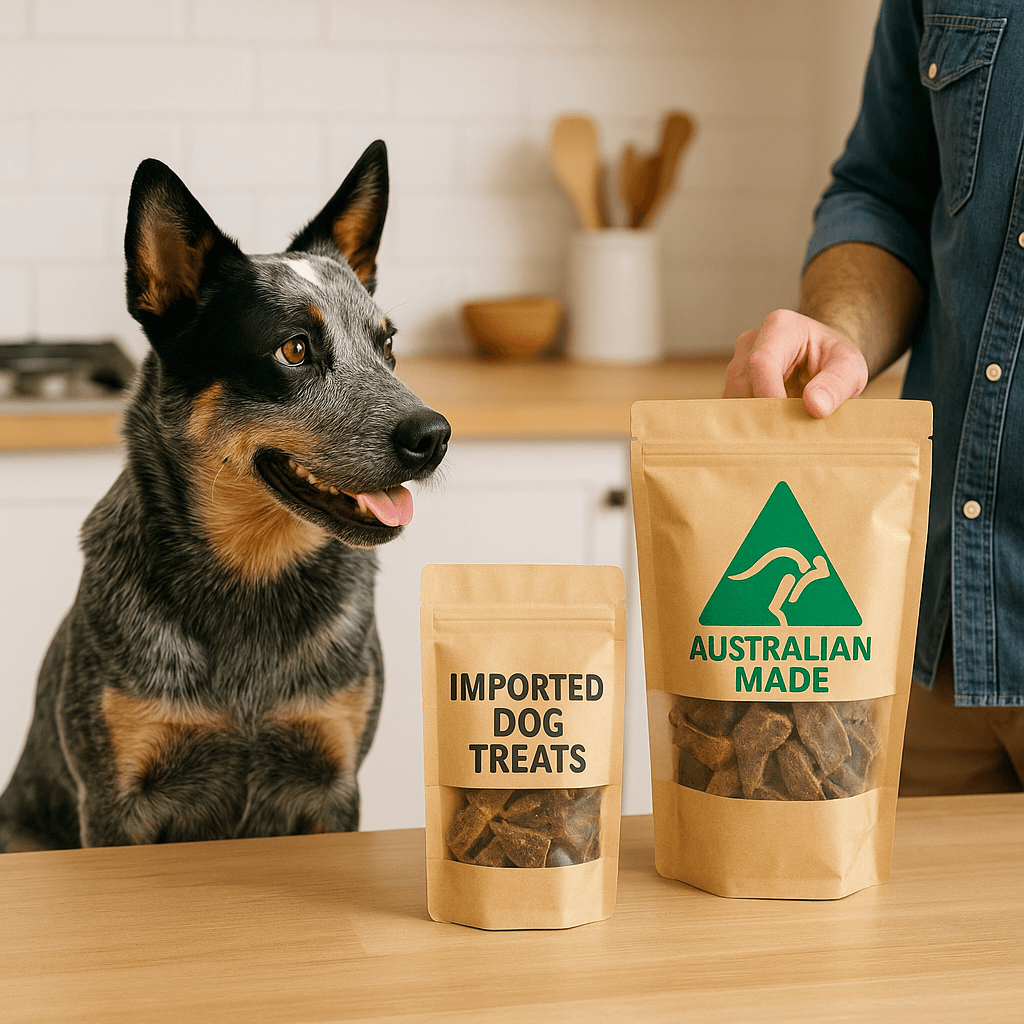Travelling with your dog can be a fun, rewarding wonderful experience that strengthens your bond and creates lasting memories. With a little planning and preparation, you and your furry friend can have a safe and enjoyable trip together. It is also important to be aware of the regulations and guidelines for travelling with pets.

Top Tips And Tricks When Preparing To Travel With Your Dog
Traveling with your dog is a unique adventure, requiring careful preparation, meticulous attention to detail and some dried dog treats. Begin by confirming your dog's fitness for travel with a vet check-up, then secure a comfortable, size-appropriate carrier.
Pack ample supplies – food, water, doggy bags – and a comforting item like their favorite blanket or toy. Plan for regular pit stops if driving or flying to ensure their comfort. Don’t overlook the importance of researching pet-friendly accommodations, and always keep a digital copy of their medical records on hand.
These tips will help ensure a stress-free journey with your furry companion success.

Get your dog comfortable with the car
Take your dog for short car rides before embarking on a long trip to get them accustomed to the car. Gradually increase the duration of the trips to help them feel more comfortable and reduce the risk of car sickness.
Train your dog for travel
Consider training your dog to be comfortable with new experiences, such as staying in a crate or riding in a car. You can start by introducing your dog to the crate or car gradually and rewarding them with treats and praise for calm behaviour.
Secure your dog during the car ride
In a car, make sure your dog is properly secured using a harness or crate to keep them safe in case of an accident. This will also prevent your dog from distracting the driver or jumping out of the car. If travelling by plane, make sure you choose an airline that allows pets and follow their guidelines for bringing your dog on board.
Bring plenty of water and food
Make sure you bring enough food and water for your dog, especially if you're travelling to an area where it may be difficult to find dog-friendly restaurants or stores. Also, bring extra in the event of being stuck somewhere for an extended time with no access to water.
Pack your dog's belongings
Bring your dog's favourite toys, blanket, and bed to make them feel more at home during the trip. You may also want to bring some poop bags, cleaning supplies, and a first-aid kit. Bring along everything your dog needs, including food, water, treats (Farmer Pete’s of course), toys, bedding, and any medications they may need.
Check with your vet before the trip
Ensure that your dog is up-to-date with vaccinations and get a health certificate from your vet if required. Ask your vet if your dog needs any additional medication or treatments before the trip.
Research dog-friendly accommodations
If you're staying in a hotel or rental, make sure they allow dogs and check their policies on fees and restrictions. Some destinations may be more pet-friendly than others. Research ahead of time to find pet-friendly restaurants, parks, and attractions, and be aware of any local regulations or restrictions that may apply to dogs.
Plan for exercise and bathroom breaks
Dogs need regular exercise and bathroom breaks, so plan your route to include rest stops or dog parks where they can stretch their legs and take a bathroom break. Allow for the extra time to do this also.
Be mindful of your dog's behaviour
Keep an eye on your dog's behaviour during the trip and adjust your plans accordingly. If your dog seems stressed or uncomfortable, take a break or adjust your plans to make them more comfortable.
Consider your dog's temperament
If your dog is nervous or prone to anxiety, consider using calming aids such as a Thundershirt or calming supplements to help keep them relaxed during the trip.
Choose the right mode of transportation
Depending on the distance and destination, you may need to choose a mode of transportation that is safe and comfortable for your dog. If you're flying, make sure to check the airline's policies for traveling with pets and book a direct flight if possible. If you're traveling by car, consider bringing a dog ramp to help your dog get in and out of the car more easily.
Be prepared for emergencies
Pack a first-aid kit for your dog, and make sure you have contact information for local veterinarians and emergency clinics. You may also want to consider getting pet insurance in case of unexpected medical expenses.
Check the weather
Be mindful of the weather conditions during your trip, and make sure your dog is comfortable and safe. In hot weather, bring plenty of water and find shaded areas for your dog to rest and keep them hydrated. In cold weather, bring a warm coat and consider booties to protect their paws from the cold ground.
Consider your dog's safety
Australia has a diverse range of wildlife, and it's important to keep your dog on a leash and supervised to ensure their safety. Be familiar with current poisons being used i certain areas and dangers around water ways.
Be a responsible pet owner
Remember to clean up after your dog and follow local regulations for leashes and dog waste disposal. Be respectful of other travellers and always keep your dog under control.
Check the regulations
Before embarking on your trip, make sure you check the rules and regulations for travelling with dogs in your destination. Some places require certain vaccinations or documentation for your dog to be allowed entry. Australia has strict regulations regarding the entry of dogs into the country, as well as interstate travel with dogs. Make sure to check the regulations and requirements in advance, including vaccinations, documentation, and quarantine requirements.
Plan your route
When travelling by car, plan your route ahead of time and identify rest stops where your dog can stretch their legs, go potty, and have a drink of water. It's also a good idea to bring along some snacks and a water bowl for your dog.

Dog Breeds That Travel Well on Holidays
While every dog is unique and their travel experience may vary, there are some dog breeds that tend to travel well and handle new environments better than others. Here are some dog breeds that are known to be good travel companions:
Labrador Retriever: Labradors are a friendly and adaptable breed that tend to adjust well to new environments. They are also energetic and enjoy going on adventures, making them great travel companions.
Golden Retriever: Like Labradors, Golden Retrievers are friendly and adaptable dogs that tend to enjoy being around people. They are also intelligent and easy to train, which can make travelling with them easier.
French Bulldog: French Bulldogs are small, compact dogs that don't require a lot of exercise, which can make them a good choice for travel. They are also friendly and adaptable, making them good companions on the road.
Chihuahua: Chihuahuas are small dogs that can easily be taken on trips and tend to do well in new environments. They are also known for being loyal and affectionate with their owners.
Beagle: Beagles are friendly, energetic dogs that love to explore, making them great travel companions. They are also adaptable and tend to adjust well to new environments.
Ultimately, the best dog breed for travel depends on the individual dog's personality and needs. No matter what breed you have, it's important to make sure your dog is comfortable and safe during travel, and to provide them with plenty of exercise, attention, and love while on the road.

Some FAQs About Travelling With Dogs:
Can I bring my dog on a plane?
Yes, you can bring your dog on a plane, but airlines have different rules and regulations regarding pet travel. Make sure to check with your airline in advance to understand their requirements and fees for bringing your dog on board.
How stressful is flying for dogs?
Flying is an incredibly stressful experience for all dogs, but it can be especially upsetting for elderly dogs, as well as pups with health or behavioural challenges.
What documents do I need to travel with my dog?
The required documents can vary depending on your destination. Common documents include a health certificate, vaccination records, and proof of ownership. Make sure to research the specific requirements of your destination and bring all necessary documents with you.
How do I keep my dog calm during the trip?
If your dog gets anxious during travel, you can try using calming aids such as a Thundershirt, calming supplements, or pheromone sprays. You can also talk to your veterinarian about medication options to help your dog stay calm.
Can I bring my dog to a hotel?
Some hotels allow dogs, but it's important to check with the hotel in advance to understand their pet policies and any fees associated with bringing your dog. Make sure to keep your dog on a leash and clean up after them to be a respectful guest.
Can I bring my dog to a national park?
National Park regulations regarding dogs vary, so it's important to research the specific park you plan to visit in advance. Some parks may allow dogs on certain trails or in designated areas, while others may not allow dogs at all.

Conclusion: Hitting The Road With Your Best Pal!
Travelling with your dog will bring exciting times for you and your dog. With a little preparation you can have a great holiday, one to remember for years to come. By following these tips, you can ensure that your dog is safe, comfortable, and happy during your travels together.
Remember to take lots of pics!



